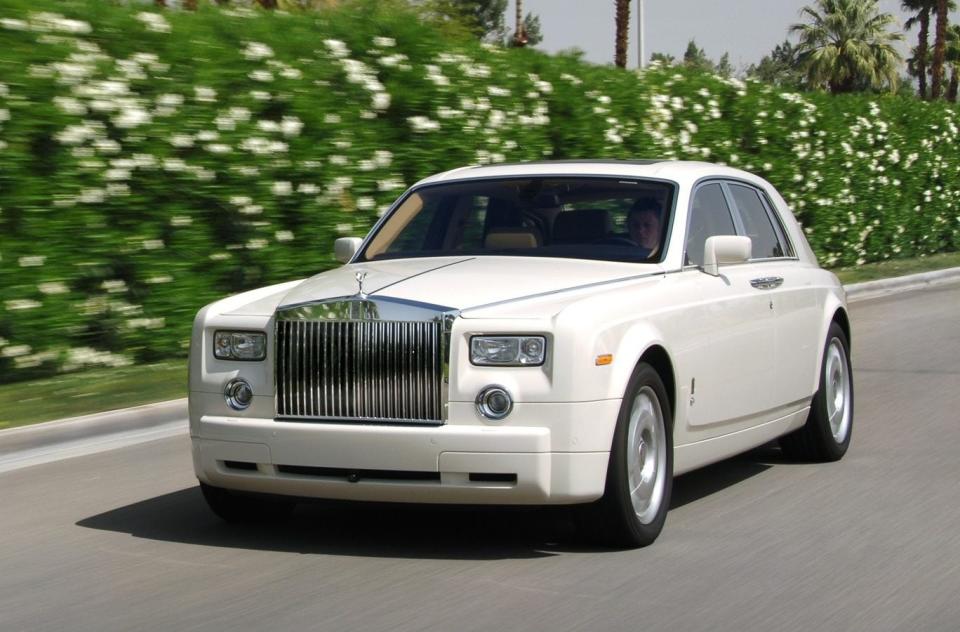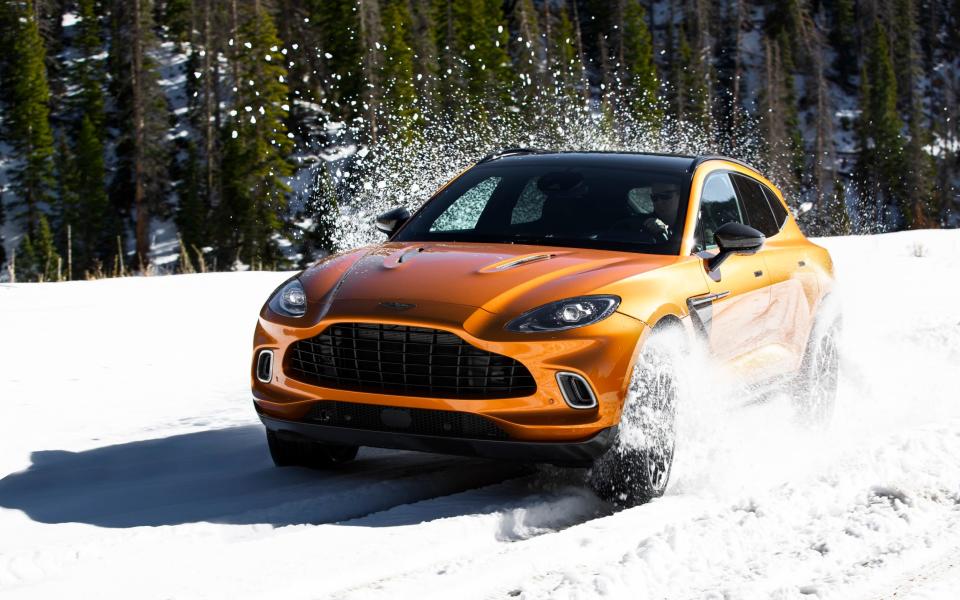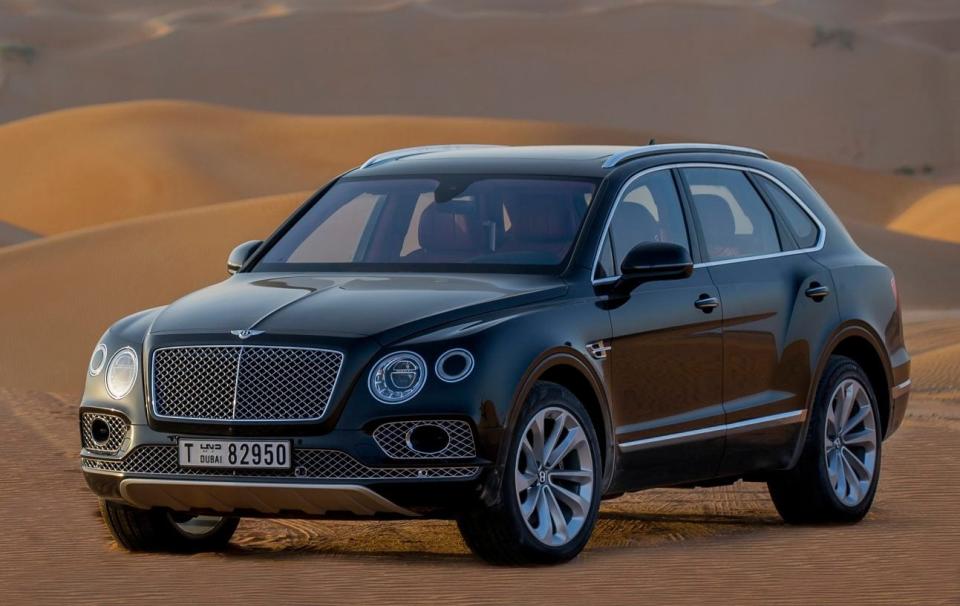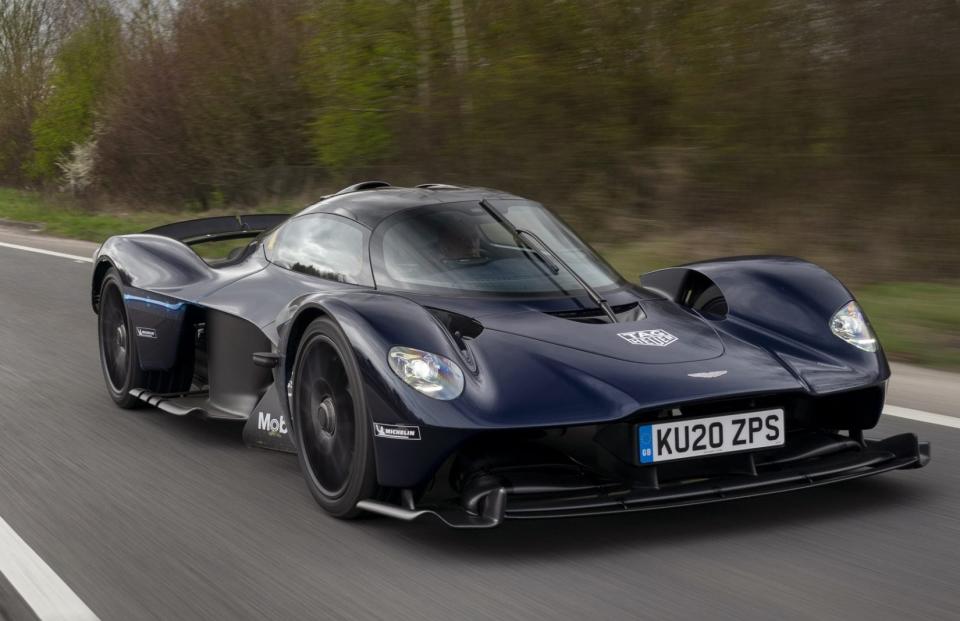How bling saved the British car industry

The British car industry has lost its way. Gone are the days when our historic marques represented a sense of understated sophistication – today it’s all about bling, ostentation. In the Nineties, even the priciest cars made by British brands were relatively demure; the Aston Martin DB7 looks like a Vauxhall Corsa compared with the current DBX SUV, and the Rolls-Royce Silver Spirit was basically a rectangle. Nowadays, everything we build seems to sparkle like a nightclub loo.
When did it all go “wrong”? Well, if you wanted to be specific, probably around the spring of 2003. This was the point at which Rolls-Royce launched the imposing Phantom VII, and Bentley began selling the Continental GT to premiership footballers.
Both brands had just become German, BMW having acquired Rolls-Royce and Volkswagen having bought Bentley. These sales represented a turning point not only in the history of two iconic marques, but also the British luxury car market as a whole. In truth, it was the year that traditionally desirable British cars stopped being rubbish.
Take Bentley, for example. The Volkswagen-era Continental GT is superior in every way to the previous Bentley Continental R, with which production of the GT overlapped at the beginning of 2003. I’ve driven both and can say with absolute certainty that – for all its charm and dilapidated grandeur – the R is truly antediluvian by comparison. It had weird driver ergonomics inexplicably passed off as “tradition”, single-figure fuel economy and it handled like a telegram – probably satisfactory for the dwindling pool of aristocrats and dictators who could afford one of these hand-built ornaments, but repellent to anyone who had ever driven a Mercedes.

The Continental GT, meanwhile, was everything a Bentley should be. Rakishly eye-catching, with muscular haunches and an imposing, masculine silhouette, the new Continental was not subtle. But it meant that Bentley suddenly appealed to young people for the first time since the 1920s. Like the supercharged “Blowers” of yesteryear, it was popular with affluent young playboys. And like the Blowers, it was exceptionally powerful, with 560bhp available from Volkswagen’s 6.0-litre twin-turbo W12 engine.
It was a phenomenal success and helped fuel Bentley’s meteoric rise to prominence worldwide.
It’s a similar story with BMW’s first Rolls-Royce model. “Das Phantom” was both an ostentatious display of opulence and a technological step up from anything the Spirit of Ecstasy mascot had adorned until then. BMW had massively improved the Range Rover two years previously, replacing the understated P38 version with the significantly more garish L322 in 2001.
All of these models are, by most accounts, more bling than the cars they replace. And all were enormously popular, earning British brands new customers at home and all over the world.

Plenty of people lament this transition, saying that British cars were better in the olden days, but that’s pure nostalgia – they weren’t. They had some residual swagger, and certainly let the world around them know that their occupants were wealthy. But it wasn’t until the bling revolution of the early 2000s that British luxury cars became relevant again – especially to young and youngish people in foreign lands, who are the industry’s main customers.
You may be devastated to learn that the average age of a Rolls-Royce buyer is currently about 43. That’s in the company’s largest market, the US, but is broadly the case worldwide – except for China where buyers are even younger. Plenty of people buying Rollers are in their 30s or even 20s, having earned their millions (or indeed billions) by means of entrepreneurship. About 90 percent of all Rolls-Royces are exported, with 30 per cent heading to these rich kids in the US and China respectively.
The inroads made by German investment in the first few years of this century and the popularity of cars like the Phantom and the Continental paved the way for a second, more recent wave of bling. The SUV – inherently practical and favoured by families – is one of Britain’s most notable exports. The Range Rover has been pretty much at the top of its game for two decades, thanks to its 2001 glow-up, but since then SUVs have become de rigeur among families of even the most rarefied socioeconomic echelons.

Bentley’s Bentayga, launched in 2015, accounts for 42 per cent of the company’s sales. About half of all Rolls-Royces produced are the Cullinan SUV. The same is true of Aston Martin and its DBX. Following the success of Porsche (which has become, arguably, an SUV manufacturer with a sideline in sports cars) the traditional British brands that once struggled to sell their luxury coupés and grand tourers are now making an absolute fortune building 4x4s.
Traditional Aston Martin customers from the company’s 20th century heyday would probably be revolted by the DBX. But that doesn’t matter, because such customers are almost certainly dead; taking their place is a much larger, much wealthier group of people who love the brand just as much.
And while you or I might consider the Cullinan to be a tad gauche, or the Bentayga to be unflatteringly hefty, it’s important to remember that we’re not the target market here. Twenty-three-year-old Chinese squillionaires are. And they think that built-in champagne flutes are essential, rather than naff.
British car makers haven’t lost their way – they’ve finally found it.
£20 million price tags and outrageous options
Bentley Bentayga – Falconry by Mulliner

Bentley describes it as “the ultimate accessory for the falconry enthusiast”. Equipped with dedicated storage for a GPS tracker, several perches and even some of those little leather hoods for birds of prey to snooze in, the Falconry by Mulliner special edition is one of the more ridiculous Bentayga versions available. It’s a £75,000 upgrade to the already-expensive SUV (so expect to spend about £200,000 all-in), which is pennies to the ultra-rich Arabs this product is aimed at.
Rolls-Royce Boat Tail

Costing £20 million – yes, that’s £20,000,000 – the Rolls-Royce Boat Tail is the most expensive new car in the world. Each one (it’s a series of three) is crafted specifically for its owner, full of hand-built this and unique that. It’s certainly an eye-catching shape, not to mention size; at 5.8 metres long it’s among the biggest cars on the road. There’s some real practicality among all that ostentatious swagger though – it has a built-in picnic table.
Aston Martin Valkyrie

In truth, the Valkyrie is more than just a display of wealth. With 1,160bhp and a whole metric tonne of downforce, this V12-powered hypercar is one of the most impressive machines in the history of British automotive engineering. Whether that makes it a justifiable purchase is really up to you and your family, given its £3 million price, but the Valkyrie will turn different heads to the Bentagya, the Cullinan or the Boat Tail.

